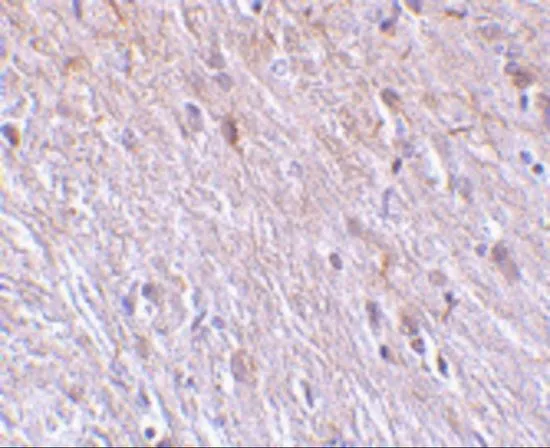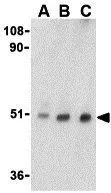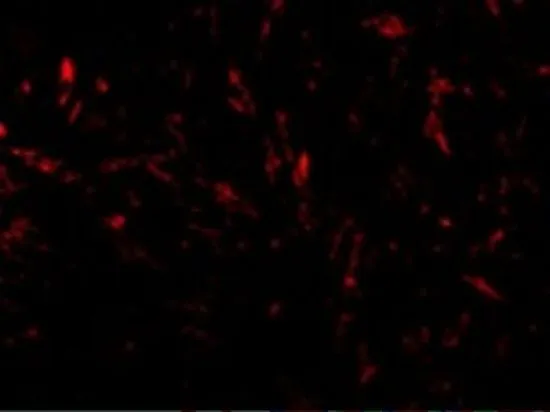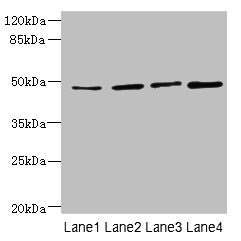
IHC-P analysis of mouse brain tissue using GTX85519 TTC5 antibody. Working concentration : 10 microg/ml
TTC5 antibody
GTX85519
ApplicationsWestern Blot, ELISA, ImmunoHistoChemistry, ImmunoHistoChemistry Paraffin
Product group Antibodies
TargetTTC5
Overview
- SupplierGeneTex
- Product NameTTC5 antibody
- Delivery Days Customer9
- Application Supplier NoteWB: 0.5 - 2 microg/mL. IHC-P: 10 microg/mL. *Optimal dilutions/concentrations should be determined by the researcher.Not tested in other applications.
- ApplicationsWestern Blot, ELISA, ImmunoHistoChemistry, ImmunoHistoChemistry Paraffin
- CertificationResearch Use Only
- ClonalityPolyclonal
- Concentration1 mg/ml
- ConjugateUnconjugated
- Gene ID91875
- Target nameTTC5
- Target descriptiontetratricopeptide repeat domain 5
- Target synonymsNEDCAFD, Strap, tetratricopeptide repeat protein 5, TPR repeat protein 5, protein Strap, stress-responsive activator of p300
- HostRabbit
- IsotypeIgG
- Protein IDQ8N0Z6
- Protein NameTetratricopeptide repeat protein 5
- Scientific DescriptionTetratricopeptide repeat protein 5 (TTC5) is a member of a diverse group of functionally distinct proteins that are characterized by containing one or more tetratricopeptide repeats (1). Each motif consists of two anti-parallel a-helices such that tandem arrays of TPR motifs generate a right-handed helical structure with an amphipathic channel that may serve to accommodate the complementary region of a target protein. While the exact function of TTC5 remains unclear, it is thought that the TPR motifs serve to mediate protein-protein interactions such as those seen with protein chaperones HSP70 and HSP90 (2) and some proteins involved in cell stress response signaling pathways such as protein phosphatase 5 (3), suggesting that TTC5 may also function via protein-protein interactions mediated by its TPR motifs.
- Storage Instruction-20°C or -80°C,2°C to 8°C
- UNSPSC12352203







